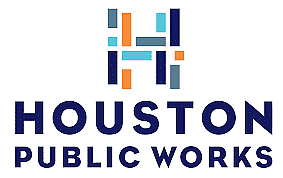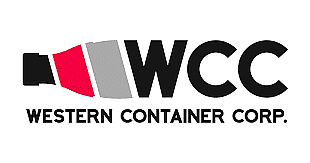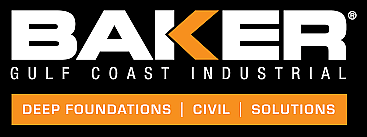Safety Hazards on a Construction Site
Construction is one of the most dangerous industries in the world. Every construction site faces a new set of challenges, difficulties, and hazards. Most workers feel comfortable and confident in their job training, however, many hazards stem from human error. Construction sites can be safer than they are now. Here is a comprehensive list of the main safety hazards on a construction site and the ways you can prevent and treat them.
Falls, slips, trips, and more
Falls, slips, trips, and more human-error-related incidents are one of the most common safety hazards on a construction site. Typically, however, people don’t simply fall over for no reason. Some hazards create dangerous working conditions, making it easier for workers to slip, fall, or trip. Here are some of the most common causes of falls, slips, trips, and more.
Debris
Disposing of debris promptly is essential to keeping workers safe. Debris from a job site can build up, blow around, and ultimately end up hitting, tripping, or otherwise injuring somebody. Construction companies can prevent debris by immediately disposing of unused materials, dirt, and other items. You should also consider weather conditions, and workers should always wear protective gear in case a piece of debris does get loose.
Clutter
Objects, equipment, and all other items should be promptly put away when not in use. Workers can prevent clutter related injuries by keeping their personal effects in their cars, lockers, or otherwise off the worksite. Employers can reduce clutter related injuries by ensuring they put all equipment away and moved to areas where their employees are not actively working.
Wet spots
When the ground, standing platforms, or equipment gets wet, employees risk slipping. To prevent this, a job site should stay clean and dry. Workers should clean up spills immediately and place caution in prominent and easy-to-see locations surrounding the spills. They should also always wear slip-resistant footwear. Further, you should inspect all ladders, stairs, and equipment for wet and slick spots before workers utilize them.
Unsafe stairs, ladders, and walkways
Stairs, ladders, and walkways are often neglected parts of construction sites. Walkways need to remain clear and dry, so workers don’t trip or slip while moving themselves around the site. Ladders and stairs should receive regular inspections and have proper safety railings installed.
Moving or falling objects
On a construction site, there are many moving parts—literally. Workers are going around, heavy and small machinery working, and often there can be objects moving overhead. With so much going on, it’s no surprise that drop and falls happen from time to time. The good news is you can (and should) prevent major ones whenever possible. Here are the most common reasons for moving or falling object injuries on a construction site.
Unsecured items
When lifting large loads or items, it’s crucial you properly secure everything. When working with heavy equipment that lifts items up and over things, it’s imperative to think about what is below. There should never be anything lifted over the heads of any person. Even if you secure the items perfectly, the risk is not worth it.
Overloaded equipment
All lifting machines have weight and load limits. Do not exceed these limits. Manufacturers design them to lift a specific amount, so they should never lift more. Not only will this extend the life of the machinery, but of the workers, too. Be sure to prominently post the lifting limits on each piece of equipment.
Lack of safety gear
Employers should always provide safety gear construction worksites, but more importantly, it should be mandatory to wear at all times. It’s hard to tell when a hazard might pop up. It’s safer to always be in protective gear and not need it than to skip the gear and end up needing it when it’s too late.
Structural collapse
Corrosion can slowly but surely lead to structures caving in or collapsing. As such, you should check equipment, site structures, and long-term building projects regularly for signs of corrosion that could end up being extremely harmful to the structures’ integrity.
Noise
Noise is an issue most construction workers face daily, but they may not even realize how damaging it is until it’s too late. The noise slowly and gradually wears down our ability to hear, and most people don’t realize they experienced hearing loss due to long and gradual exposure to excessive noise. Here are common issues resulting in hearing loss from excessive noise exposure.
Outdated equipment
Older equipment may run louder than more updated and modern equipment may. Due to this, it’s important to keep the latest noise-canceling technology-filled equipment at a job site.
Poorly organized floorplan
Many job sites practice poor organization when it comes to machinery. Generators and other loud pieces of equipment should sit as far from the workers as possible. Unnecessary equipment should also not run next to workers, and employees should work rotate in and out of noisy areas.
Exposure to harmful chemicals
It’s common for construction workers to experience exposure to potentially harmful chemicals. It takes many chemicals to properly maintain and build a construction project. As such, when handled and stored properly, these chemicals should not pose much risk to workers. Here are some of the most common causes of harmful chemical exposure.
Unidentified or misidentified chemicals
Chemicals are unavoidable when working on a construction site. However, there are ways to ensure you handle them with care. When handling chemicals, workers should properly and prominently label each one so everyone is aware of what exactly they are handling. Workers should also always wear protective gear when handling hazardous materials. People should always wear gloves, eye protection, and other safety items when handling these materials.
Electricity
Electricity accidents are one of the leading causes of injury and death in the construction industry year after year. Although they are very common, electrical problems are preventable. You should check electrical issues regularly, even if there aren’t prevalent signs of major issues. Here is a list of the most common reasons for electricity-related accidents in construction site settings.
Arc flash
Arc flash occurs when an electric current passes through the air and the isolation isn’t enough to hold the voltage. Arc flash often results in fire or explosions. To prevent this, workers should regularly check electric work for any signs of wear or damage. Additionally, if you notice an issue, you should fix the electrical components promptly.
Wet conditions
Water and electricity do not mix well. When working with electricity, you should avoid water and dampness at all costs. If the weather conditions are too humid or wet, companies should suspend all electrical work until conditions improve.
The good news is, with the help of qualified engineers, you can easily prevent a lot of these issues. For consultants who specialize in forensic engineering in Austin, TX, and surrounding cities and states, reach out to Dreiym Engineering.












































